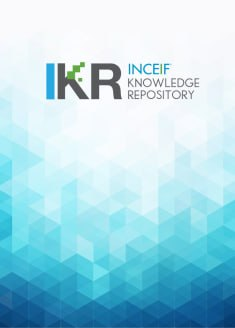
Browse by Author "Azali Mohamed"
Results Per Page
Sort Options
- PublicationGrowth differences between former coloniesBashir Ahmad; Mohd Yusof Saari; Azali Mohamed; Muzafar Shah Habibullah; Baharom Abdul Hamid (Departments of Economic Theory of the Autonomous University of Madrid and the University College of Financial Studies (CUNEF), 2023)
The objective of this study are to examine the impact of colonization on former colonies on their economic growth performances. The relationship between economic growth and selected independents variables are discussed covering 72 former colonies for the period of 1995 to 2015. The objective is to investigate the determinants of growth in former colonies colonized by four former conquerors namely Spain, France, The United Kingdom and The Soviet Union (Russian Federation). To achieve this objectives, we employed Generalized Method of Moment (GMM) estimator popularized by Arellano and Bond (1991) and Blundell and Bond (1998) and the independent variables of the estimation to achieve the targeted objectives, are the control variables of growth gross fixed capital formation (GFCF), as a proxy for capital and total population (TPOP) as a proxy for labor. This study also uses other independent variables such as length of colonial period (COLOH) which is the focus variable, domestic credit to private sector (DCPS), trade openness (TOP), foreign direct investment (FDI) and a couple of institutional qualities representing variables such political rights (PR) and civil liberties (CL). The results are quite consistent and robust - colonization is positive and highly significant implying that colonization indeed has a positive impact on the colonized countries, though the masters are perceived as parasites. They also prepare the right infrastructures that could enable the colonized countries to grow economically. As for the other variables including the control variables population, domestic credit to private, trade openness, and gross fixed capital formation are also positive and significantly related.
- PublicationTests of the different variants of the monetary model in a developing economy: Malaysian experience in the pre- and post-crisis periodsLee Chin; Azali Mohamed; Abul Mansur Mohammed Masih (Routledge, 2009)
This study examines the validity of four different variants of the monetary model of exchange rate determination for Malaysia covering both the preand post-crisis periods using the vector error-correction models. The findings demonstrate that for both periods, the variables used are cointegrated. Tests tend to suggest that of the four variants of monetary model, the sticky-price model holds in both periods and the flexible-price model holds only in the post-crisis period. The proportionality between the exchange rate and relative money does not hold in any period. The plotted actual and fitted exchange rates for both sub-samples show that the models are able to track the actual exchange rate trend quiet well.
- PublicationThe dynamics of Thailand’s real exchange rateMuzafar Shah Habibullah; Azali Mohamed; Chow Li Shen; Baharom Abdul Hamid (Institute of Interdisciplinary Business Research, 2011)
This study examines the fundamental determinants of the real exchange rate in Thailand during the period of 1976-2006, using the Bounds testing approach suggested by Pesaran et al. (2001). Three main fundamentals are used to identify the RER, namely, the productivity differentials (proxied by GDP per capita), the net foreign assets position (proxied by the current account balance, CAB), and the real interest rate differential (RIR). The empirical results demonstrate stable long run relationship between the real exchange rate (RER) and GDP per capita (GDPPC), real interest rate (RIR) and current account balance (CAB).
Abstract View
2676888
View & Download
198759
